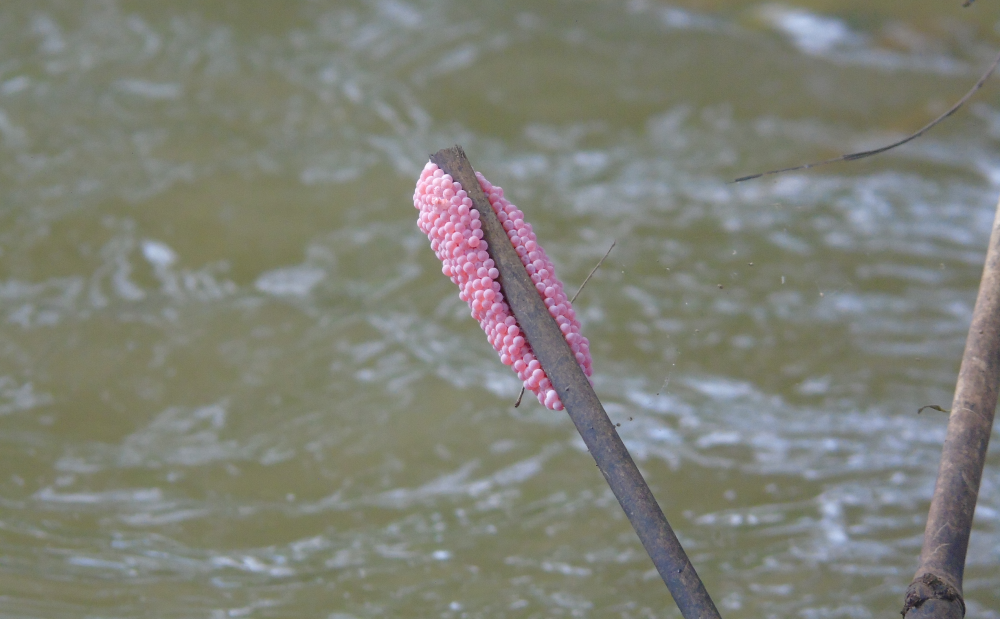It’s hard to miss the eggs of apple snails. Popped out in a curious shade of Pepto-Bismol pink, they are packed full of a neurotoxin that’s thought to be unique to these animals, and warning enough that no predators other than red fire ants dare eat them. Impressive, but unfortunately, as adults, these snails can be undesirable number one.
That’s certainly the case in Texas, where Parks and Wildlife has urged that all species of the apple snail genus Pomacea (except for Pomacea bridgesii, the spiketop apple snail) are prohibited. They are a threat to the environment, known to eat aquatic plants and attack certain crops, and as a result, can also outcompete native snails.
Apple snails are a popular aquarium species, which is all fun and games until somebody decides to let their pets loose in the nearest pond. This kind of release is how a lot of invasive species start out, but they can also spread naturally by either traveling in water or suckered onto other animals.
Apple snails can quickly become very successful because they aren’t fussy eaters and eat a lot. They also lay very bizarre eggs that almost nothing can eat, thanks to a neurotoxin called perivitellin-2, or PV2.

Yes, we know they look strawberry flavored, but they are in fact juicy with an impressive neurotoxin.
Image credit: 4moon, Shutterstock.com
It’s the result of two immune proteins being smushed together to create a neurotoxin that targets the gut, making it similar to toxins seen in plants and bacteria. Its discovery marked the first time a toxin that works like this had been found in animals, and mice studies revealed it can break through cell layers and kill tissue, affecting nutrient absorption.
Curiously, red fire ants can munch on these destructive berries no problem, but they strike fear in the hearts of wildlife officials for a different reason. That’s because each tiny orb has the potential to become an invasive eating machine that can harbor a dangerous, and potentially deadly, parasite.
Apple snails can be an intermediate host for the rat lungworm parasite, Angiostrongylus cantonensis. This nematode can infect mammals, including humans, and while most people recover, it can cause eosinophilic meningitis, which in rare cases proves fatal.
So, the advice? You can report sightings to the Texas Invasive Species Institute, who say that citizens are permitted to remove pink egg masses. “This is done by scraping off the egg masses to allow them to fall into the water since inundated eggs will not hatch,” they say. “However, only pink egg masses should be scraped or removed. TPWD also recommends you destroy the egg masses before drowning them in the water, to ensure none survive. This can be done by stepping on the egg masses.”
Don’t be fooled by those juicy pink balls, a forbidden fruit you’d do well to steer clear of.
Source Link: Beware The Pink Goo: Texas Officials Ask Residents To Be On The Lookout For A Killer